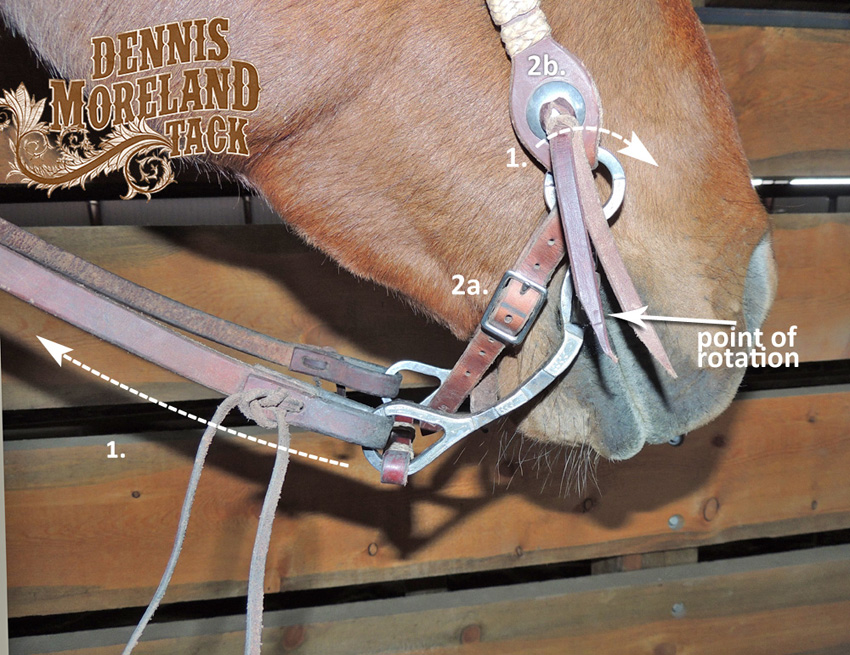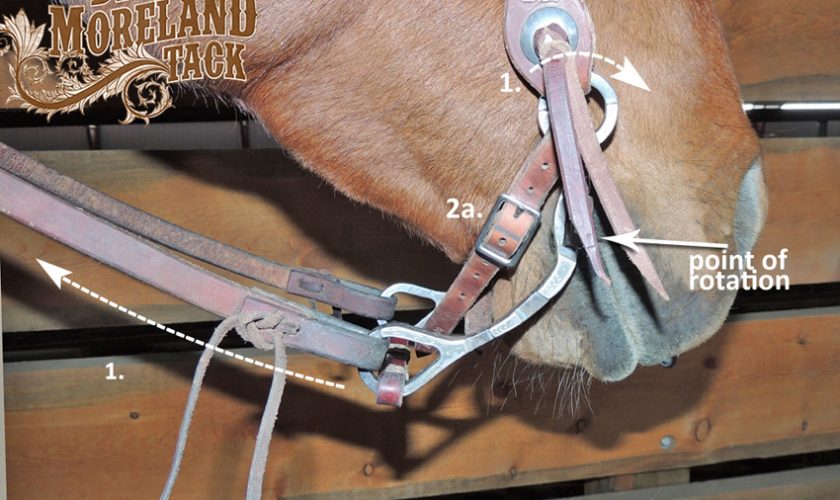 Last week on the Dennis Moreland Tack Tip, we discussed two parts of the leverage bit: the shanks and the purchases. This week we’ll discuss some of the events that cause a leverage bit to function.
Last week on the Dennis Moreland Tack Tip, we discussed two parts of the leverage bit: the shanks and the purchases. This week we’ll discuss some of the events that cause a leverage bit to function.
To review, the shanks are the portion of the bit’s cheek pieces that extend from the point where the mouthpiece is attached to the cheek piece (butt) downward and include the rein rings. The purchases are the parts of the bit’s cheek pieces that extend from the butt of the mouthpiece to the tops of the bridle rings.
View the attached photo guideline to visualize these steps:
1a. When the reins are pulled pressure is placed on the mouth by the mouthpiece and the bit revolves around the point of rotation or butt of the mouthpiece This causes the shanks to move behind the point of rotation.
1b. At the same time the shanks are moving behind the point of rotation when the reins are pulled the purchase, which we know includes the bridle rings, moves forward of the butt of the mouthpiece.
2a. The combination of the movements of the shanks behind the point of rotation and the purchases forward of the point of rotation causes the curb strap to make contact with the chin and continue to become tighter as the reins are pulled tighter. This puts the horse’s lower jaw in a vise-like situation. In addition to the pressure from the pull on the reins, the amount of pressure from the curb is dependent on how loose or tight it is adjusted. A helpful hint: sliding 2 fingers between the curb and the chin, with slack in the reins, and adjusting the curb to that point is generally a good guideline for proper adjustment.
2b. At the same time and as a result of the rotation of the purchases forward, the crown piece on the headstall (attached to the bridle rings via the headstall’s cheek pieces) is pulled down causing pressure on the poll.
A horse that is trained properly to ride with a leverage bit should respond by bringing his nose in, lowering his head and slowing his foot movements until he stops and/or the pressure on the reins is released. It’s always a good idea to allow a horse to get used to the feel of a new bit before applying pressure to the reins.
For more information on Dennis Moreland handmade bits call 817-312-5305 or visit: http://www.dmtack.com/pcategory/horse-bits/
We’re a full-line manufacturer of handmade tack and we’re here to help you! Thirty nine years strong! Read more Tack Talk:
What Are Naturally Weighted Reins?


